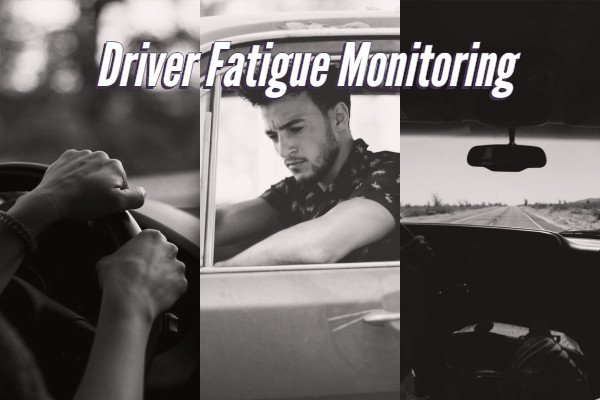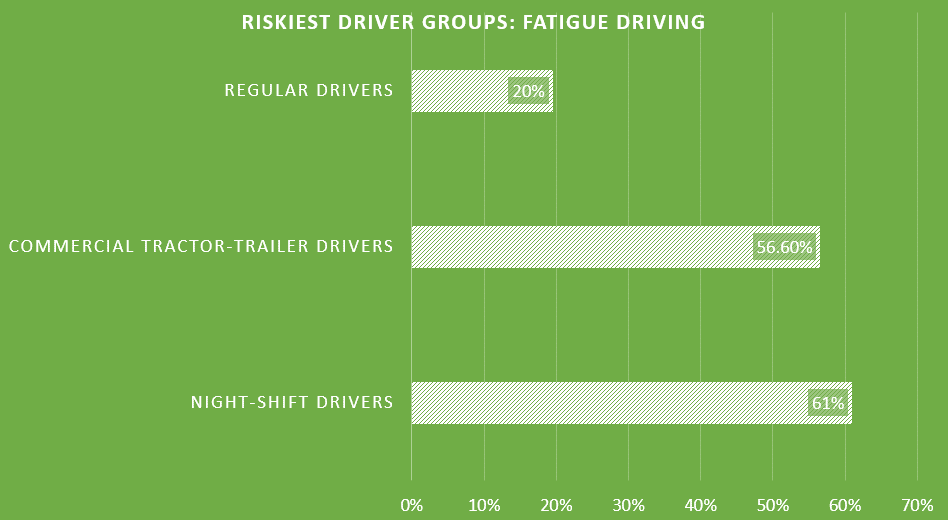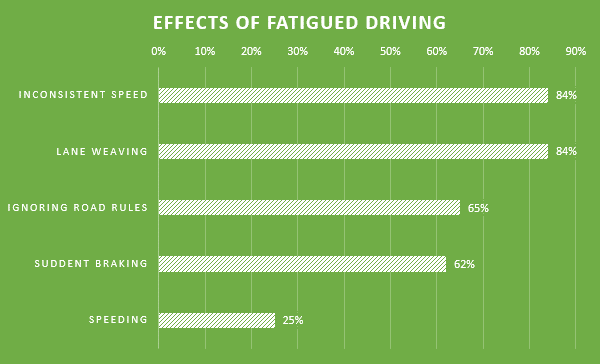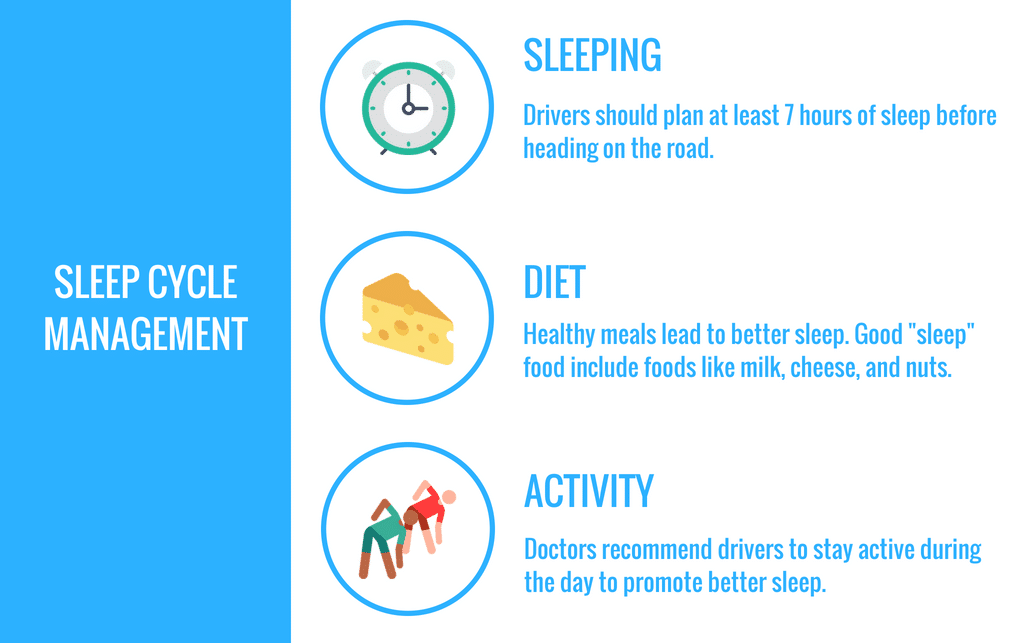Why is driver fatigue monitoring a big topic in fleet safety? First and foremost, driver fatigue is a big contributor to accidents. However, more importantly, fleet drivers are the most likely fatigued drivers.
According to a survey amongst traffic officers, the riskiest fatigued driver groups are night-shift drivers (61%) and commercial tractor-trailer drivers (56.6%). Regular drivers still make the list, but their risk level range between 3% to 20%.
This guide explores: (1) “microsleeping” and its safety risks, and (2) driver fatigue monitoring and prevention strategies.
Sleeping at the Wheel
You probably heard the expression “falling asleep at the wheel” before. Unfortunately, this is a real thing. It’s called “micro-sleeping” and results in many traffic accidents.
What is micro-sleeping?
Micro-sleeping is when a person falls asleep or loses attention. It usually happens when someone is tired and is doing something mundane. Micro-sleep only happens for a few moments, but during those moments, can cause a traffic accident.
How does micro-sleeping affect drivers?
Let’s take a look at another traffic officer survey. In that survey, officers shared some common symptoms of fatigued drivers. They include: inconsistent speed (84%), frequent lane weaving (84%), ignoring road signs and lights (65%), sudden braking (62%) and speeding (25%).
All of these driving infractions increase accident risk. In fact, the CDC reports that there are 72,000 crashes every year.
Driver Fatigue Monitoring
Sure, drowsy driving is dangerous. However, at the end of the day, what can people do for driver fatigue monitoring and prevention?
Both drivers and fleet employers should share responsibilities. Drivers are responsible because they operate the vehicle and manage their sleep cycle. Fleets are also responsible because workers are the most likely fatigued drivers and fleets need to manage worker safety.
Drivers
Drivers are responsible for their sleep cycle and for avoiding micro-sleeping.
Sleep Cycle Management
The most important step to avoiding driver fatigue is managing sleep cycles. Some good sleeping habits include:
- Sleeping: Firstly, drivers need to get enough sleep. Drivers should plan at least 7 hours of sleep before heading on the road.
- Diet: Secondly, drivers should have healthy meals for better sleep. Sleep food are meals that have tryptophan, which is a vitamin that produces sleep chemicals. Good examples include milk, cheese, egg, nuts, fish, and beans.
- Activity: Thirdly, drivers need enough exercise for a better night’s of sleep. Doctors recommend spending time to exercise, or at least, take a good walk throughout the day.
Avoiding Micro-Sleeping on the Road
What should drivers do if they feel like sleeping while driving?
Some drivers have strategies such as opening their window, talking to passengers, stopping to eat, and changing their music. Unfortunately, none of those strategies are effective.
Officers advise that there are only 2 good strategies. First, drivers can swap with a passenger if their passengers are alert and know how to drive. Second, tired drivers can pull over and sleep.
Fleets
Fleets should also play a part in driver fatigue monitoring and prevention.
Erratic driving sensors
One strategy is monitoring drivers for erratic driving. As previously mentioned, some common symptoms include speed changes, lane weaving and sudden brakes.
Some fleets use an event recording camera to monitor fatigued drivers. For instance, if a supervisor notices a lot of event alarms for a driver, they can use livestream to investigate if the driver is fatigued.
Fatigue sensors
Another strategy is using specialized fatigue sensor cameras. Some cameras have sensors that notice things like closing eyelids, tilting heads, and yawning. The camera then uses an audible alarm to wake up the driver. In addition, it reports the event to a manager, who can then grant their employee sleeping breaks.
Click here to learn more about fatigue sensor cameras.
Links











































